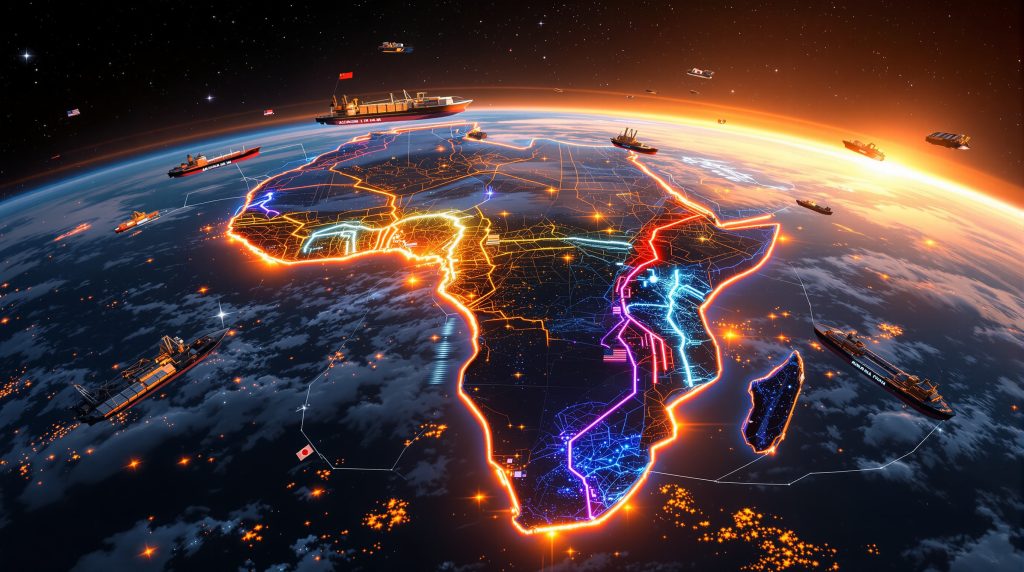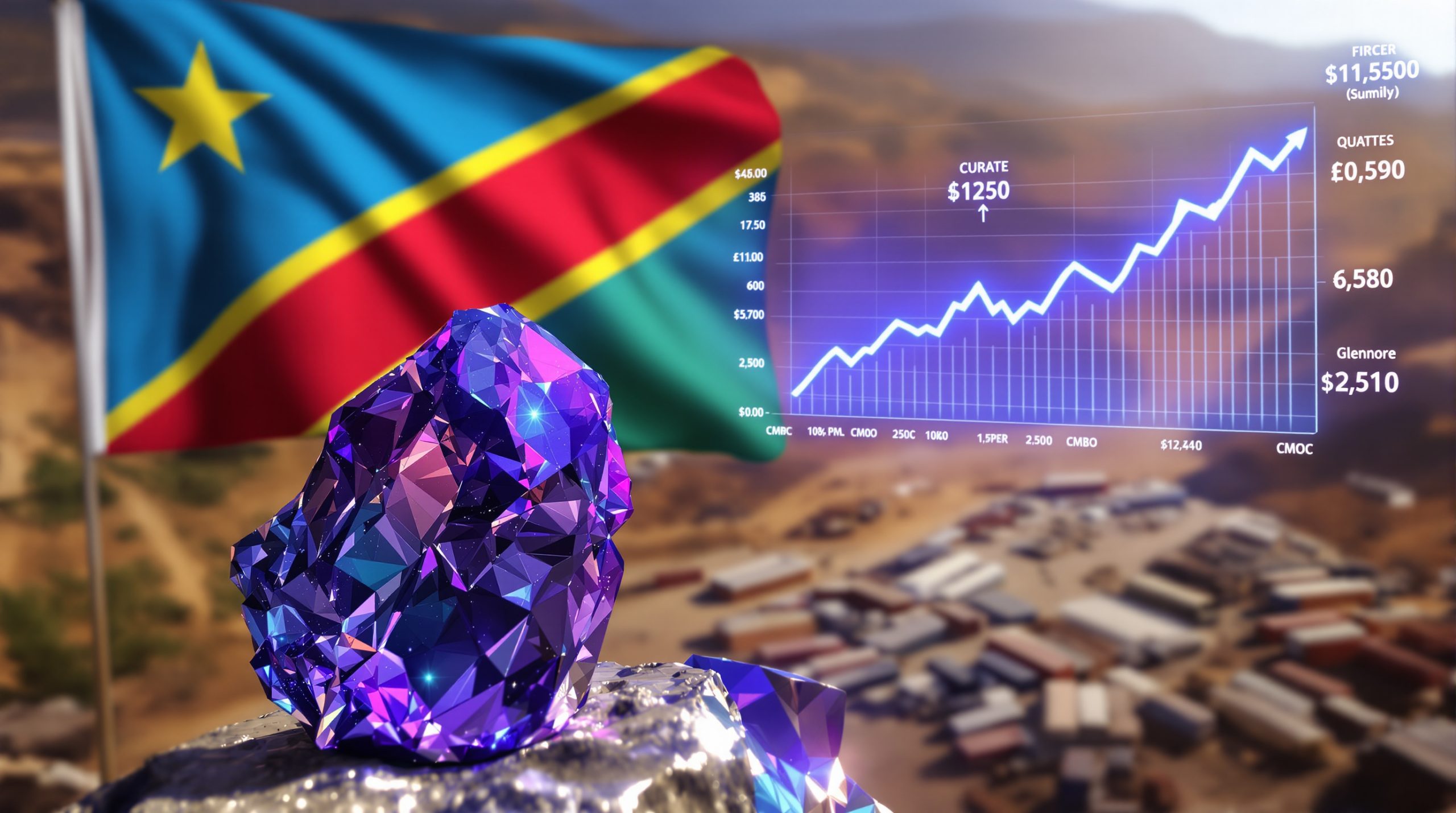Africa Emerges as the New Front in Critical Minerals Power Play
Africa has rapidly transformed from a peripheral player to a central battleground in the global race for critical minerals. With approximately 30% of the world's critical mineral reserves, the continent now stands at the crossroads of international competition for resources essential to clean energy transitions, defense technologies, and digital infrastructure development.
The strategic significance of African mineral wealth has triggered an unprecedented scramble among global powers seeking to secure supply chains independent from traditional dominant players. This competition is reshaping not only mining industry evolution but also infrastructure development across the continent.
Why Are Critical Minerals Becoming Increasingly Important?
The Energy Transition Driving Demand
Critical minerals form the backbone of the global energy transition. The International Energy Agency projects that copper demand will increase by 50% by 2040, while lithium demand could grow eightfold during the same period. These projections reflect the accelerating shift toward renewable energy technologies and electric vehicles.
Key minerals in high demand include:
| Mineral | Primary Uses | Key African Producers |
|---|---|---|
| Copper | Electrical wiring, renewable energy | DRC, Zambia |
| Cobalt | EV batteries, aerospace | DRC (70% of global reserves) |
| Lithium | Battery storage, electronics | Zimbabwe, Namibia, Mali |
| Manganese | Steel production, batteries | South Africa, Gabon |
| Graphite | Battery anodes, industrial applications | Mozambique, Madagascar |
Beyond Energy: Strategic Applications
Critical minerals energy security extends beyond energy applications to crucial roles in:
- Defense technologies and weapons systems
- Aerospace components and satellite systems
- Digital infrastructure and semiconductor manufacturing
- Medical equipment and pharmaceutical production
This multi-sector demand has elevated these resources from purely commercial commodities to strategic national security assets.
Which Global Powers Are Competing for African Resources?
The United States' Strategic Approach
The United States has intensified its focus on African critical minerals as part of its broader strategy to reduce dependency on Chinese-dominated supply chains. Key U.S. initiatives include:
- Committing up to $553 million for the Lobito Atlantic Railway upgrade in Angola
- Establishing bilateral critical minerals partnerships with several African nations
- Deploying diplomatic and development finance tools to counter Chinese influence
- Implementing the Minerals Security Partnership with allies to coordinate investments
China's Established Dominance
China maintains a commanding position in African critical minerals through:
- Controlling approximately 70% of global processing capacity for 19 of 20 key minerals
- Investing over $1.4 billion in the Tanzania-Zambia Railway Authority (TAZARA) revitalization
- Leveraging decades of infrastructure development and mining investments
- Integrating African resources into its Belt and Road Initiative framework
The US-China trade war impact has further intensified competition for these strategic resources, with both powers seeking to secure supply chain advantages.
Other Key Players
Japan has emerged as another significant competitor, recently announcing support for the Nacala Corridor connecting Zambia and Malawi to the Indian Ocean via Mozambique. The European Union has also developed its Critical Raw Materials Act with specific provisions targeting African partnerships.
How Are Railway Corridors Becoming Strategic Assets?
The Battle for Transportation Routes
Three major railway corridors have become focal points in the competition for African minerals:
-
The Lobito Corridor (U.S.-backed): Connecting Angola's Atlantic coast to copper and cobalt mines in Zambia and the Democratic Republic of Congo
-
The TAZARA Railway (China-backed): Linking Tanzania's Dar es Salaam port to Zambia's copper belt
-
The Nacala Corridor (Japan-backed): Connecting Zambia and Malawi to Mozambique's Nacala port on the Indian Ocean
These competing corridors represent more than transportation infrastructure—they determine which global powers will influence the flow of critical minerals from production centers to international markets.
Strategic Port Development
Control over port facilities complements railway investments, creating integrated export channels. Major developments include:
- Expansion of Angola's Lobito Port to accommodate increased mineral exports
- Modernization of Tanzania's Dar es Salaam Port with Chinese investment
- Development of Mozambique's Nacala Deep Water Port with Japanese support
These ports serve as crucial gateways determining whether African minerals flow east toward Asian markets or west toward European and American destinations.
What Are the Challenges and Opportunities for African Nations?
Governance and Benefit-Sharing Concerns
The surge in critical minerals investment presents both opportunities and challenges for African countries:
- Over 100 bilateral and multilateral agreements were signed between 2019 and 2023
- Concerns persist about transparency, equitable benefit-sharing, and environmental impacts
- Governance frameworks remain underdeveloped in many resource-rich countries
- Human rights risks increase when accountability mechanisms are weak
Potential for Value Addition
African nations are increasingly seeking to move beyond raw material exports to capture more value through:
- Developing domestic processing and refining capabilities
- Establishing regional value chains through African Continental Free Trade Area
- Implementing stronger local content requirements in mining agreements
- Investing in technical education and skills development
South Africa beneficiation efforts provide a model for other African nations seeking to capture more value from their mineral resources.
Case Study: DR Congo's Strategic Positioning
The Democratic Republic of Congo, holding approximately 70% of global cobalt reserves and significant copper deposits, exemplifies the complex dynamics at play:
- The country has proposed mineral access deals to the U.S. in exchange for conflict resolution support
- It has implemented a ban on raw cobalt exports to encourage domestic processing
- Chinese companies currently dominate its mining sector despite diversification efforts
- Artisanal mining presents both economic opportunities and human rights challenges
How Might the Critical Minerals Race Reshape Africa's Development?
Potential for Economic Transformation
The critical minerals boom could catalyze broader economic development through:
- Infrastructure improvements benefiting multiple economic sectors
- Technology transfer and skills development
- Increased tax revenues for public investment
- Regional integration through cross-border infrastructure
As outlined by the World Economic Forum, critical minerals could serve as a catalyst for sustainable development across the continent.
Risks of Resource Nationalism and Conflict
The strategic importance of these minerals also presents risks:
- Increasing resource nationalism as governments recognize their leverage
- Potential for renewed conflicts in mineral-rich regions
- Environmental degradation without proper safeguards
- Economic dependency on volatile commodity markets
What's Next for Africa's Critical Minerals Sector?
Emerging Trends to Watch
Several key trends will likely shape the future of Africa's critical minerals landscape:
-
Increasing Regionalization: African countries forming blocs to negotiate collectively with external powers
-
Processing Capacity Development: Growth in domestic refining and processing facilities to capture more value
-
ESG Standards Evolution: Stricter environmental and social governance requirements from both regulators and investors
-
Technology Integration: Adoption of advanced mining technologies to improve efficiency and reduce environmental impacts
-
Diversification of Partners: African nations strategically balancing relationships between competing global powers
According to Mining Weekly, unleashing Africa's critical minerals potential will require coordinated efforts to overcome infrastructure challenges and governance issues.
Strategic Considerations for Stakeholders
For companies and investors considering Africa's critical minerals sector:
- Political risk assessment becomes increasingly complex as geopolitical competition intensifies
- Infrastructure access may determine project viability more than mineral grades
- Community engagement and social license become critical success factors
- Supply chain transparency requirements will likely increase
Understanding the global mining landscape is essential for stakeholders navigating these complex dynamics.
Africa's Pivotal Role in the Global Minerals Future
Africa emerges as the new front in critical minerals power play as it stands at a historic crossroads in the global critical minerals landscape. The continent's vast resources position it not merely as a supplier of raw materials but potentially as a strategic player capable of influencing global supply chains and capturing greater value from its natural endowment.
The competition between global powers for access to these resources reflects their strategic importance in the emerging clean energy economy and advanced technology sectors. For African nations, this presents both unprecedented opportunities and significant challenges.
How African governments navigate these complex dynamics—balancing external partnerships, domestic development priorities, and environmental stewardship—will significantly influence not only their own economic trajectories but also the global energy transition and technological development for decades to come.
FAQ: Critical Minerals in Africa
What are the most important critical minerals found in Africa?
Africa hosts significant deposits of copper, cobalt, lithium, manganese, platinum group metals, rare earth elements, graphite, and bauxite, among others. The Democratic Republic of Congo alone accounts for approximately 70% of global cobalt production.
How is China currently dominating the critical minerals supply chain?
China has established dominance through strategic investments in African mining operations, development of processing facilities, and infrastructure projects connecting mines to ports. China currently controls processing for 19 of 20 key minerals, with an average market share of around 70%.
What strategies are Western countries using to counter China's influence?
Western countries are employing a combination of diplomatic initiatives, development finance, infrastructure investments, and strategic partnerships to diversify supply chains. The U.S.-backed Lobito Corridor and Japan's support for the Nacala Corridor represent significant counter-efforts to China's established presence.
How might African countries maximize benefits from their critical mineral resources?
African nations can maximize benefits by developing stronger governance frameworks, investing in domestic processing capabilities, negotiating more favorable terms with investors, implementing transparent revenue management, and coordinating regional approaches through the African Continental Free Trade Area.
Ready to Capitalise on Africa's Critical Minerals Boom?
Discover time-sensitive investment opportunities in African critical minerals with Discovery Alert's proprietary Discovery IQ model, delivering instant notifications on significant ASX mineral discoveries to help you stay ahead of global markets. Understand why major mineral discoveries can lead to significant market returns by exploring Discovery Alert's dedicated discoveries page, showcasing historic examples of exceptional outcomes.




